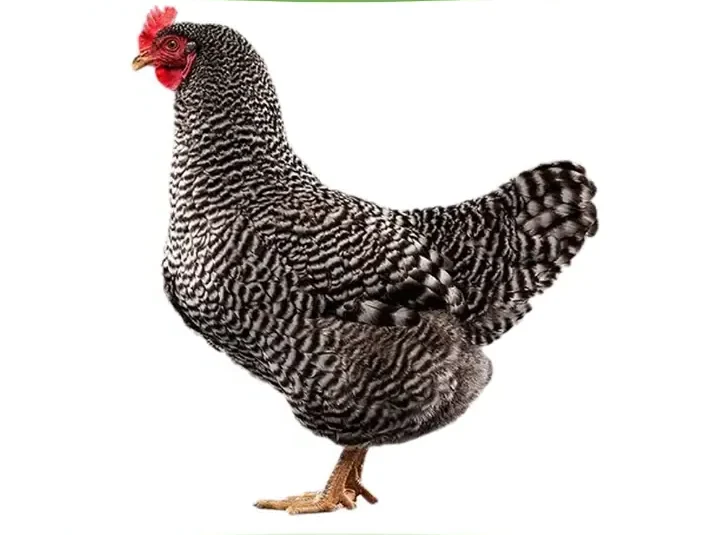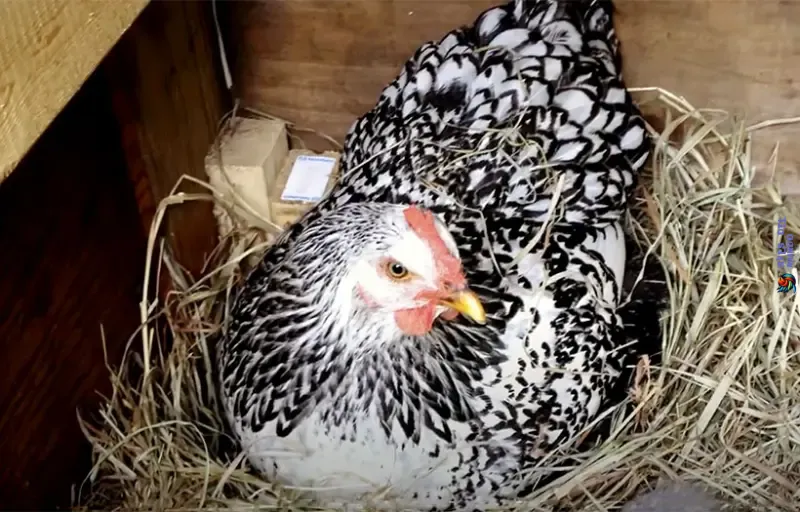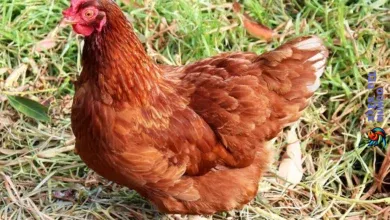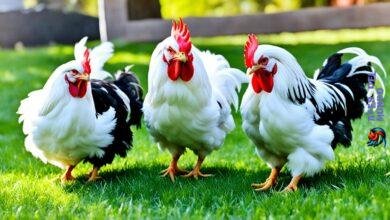Plymouth Rock Chicken: Proven Strategies to Boost Health and Productivity
The Plymouth Rock chicken is a historic and highly valued breed in the world of poultry. Known for its hardiness, productivity, and striking appearance, this breed has become a staple for many backyard chicken enthusiasts and farmers alike.
This blog will provide an in-depth look at the Plymouth Rock chicken, covering its history, characteristics, care requirements, and benefits. By the end of this article, you will have a thorough understanding of why the Plymouth Rock chicken is a popular choice among poultry keepers.

Table of Contents
- History of the Plymouth Rock Chicken
- Physical Characteristics
- Behavior and Temperament
- Care and Management
- Breeding Plymouth Rock Chickens
- Economic and Practical Benefits
- Common Challenges and Solutions
- Conclusion
History of the Plymouth Rock Chicken
The Plymouth Rock chicken has a storied past that dates back to the mid-19th century in the United States. The breed was first exhibited in Boston, Massachusetts, in 1849, and by the 1860s, it had become one of the most popular breeds in the country. Its origins are somewhat shrouded in mystery, but it is generally believed to be a cross between Dominique chickens and either Black Java or Cochin chickens.
The breed’s name comes from the famous Plymouth Rock in Massachusetts, symbolizing its American heritage. The Plymouth Rock was prized for its dual-purpose qualities, being both an excellent egg layer and a good source of meat. It quickly became a favorite among farmers due to its hardy nature and ability to thrive in various climates.
Physical Characteristics
Plymouth Rock chickens are easily recognizable by their distinct appearance. Here are some of the key physical characteristics:
- Size: Plymouth Rocks are considered a large breed, with roosters weighing around 7.5 to 9.5 pounds and hens weighing 6.5 to 8 pounds.
- Color: The most common variety is the Barred Plymouth Rock, featuring alternating black and white stripes. Other varieties include White, Buff, Silver Penciled, Partridge, and Columbian.
- Comb: They have a single, bright red comb that stands upright, along with red wattles and earlobes.
- Body: They have a broad, deep body with a slightly curved back and a full, rounded breast.

Below is a table summarizing the physical characteristics of the Plymouth Rock chicken:
| Characteristic | Description |
|---|---|
| Size | Large; roosters 7.5-9.5 lbs, hens 6.5-8 lbs |
| Color Varieties | Barred, White, Buff, Silver Penciled, Partridge, Columbian |
| Comb Type | Single, upright |
| Body Shape | Broad, deep, rounded breast |
Behavior and Temperament
One of the most appealing aspects of the Plymouth Rock chicken is its behavior and temperament. These chickens are known for being:
- Friendly and Docile: Plymouth Rocks are generally calm and friendly, making them an excellent choice for families with children.
- Hardy: They are well-suited to both hot and cold climates, showing resilience in various weather conditions.
- Good Foragers: They enjoy foraging and are effective at finding their own food when given the opportunity to free-range.
- Prolific Layers: Hens lay approximately 200 to 280 large brown eggs per year, making them a reliable source of eggs.
Their friendly nature and easy-going temperament make them a joy to keep, and they often become quite tame and affectionate with their handlers.
Care and Management
Proper care and management are essential for maintaining the health and productivity of your Plymouth Rock chickens. This section will cover the basics of housing, feeding, and health care.
Housing
Plymouth Rocks are adaptable and can thrive in various housing setups, but certain factors should be considered to ensure their well-being:
- Space: Provide at least 4 square feet of coop space per bird and 8 to 10 square feet of run space per bird.
- Ventilation: Ensure the coop is well-ventilated to prevent respiratory issues, but also protected from drafts.
- Nesting Boxes: Provide one nesting box for every 4 to 5 hens to encourage regular egg laying.
- Roosting Bars: Install roosting bars inside the coop, as chickens prefer to roost off the ground at night.
Feeding
A balanced diet is crucial for the health and productivity of Plymouth Rock chickens. Here are some feeding guidelines:
- Starter Feed: For chicks, provide a starter feed with 18-20% protein until they are about 6 weeks old.
- Grower Feed: Transition to grower feed with 16-18% protein from 6 weeks to around 20 weeks of age.
- Layer Feed: Once hens start laying, switch to layer feed with 16-18% protein and added calcium to support eggshell formation.
- Supplements: Provide grit for digestion and oyster shell for calcium supplementation, especially for laying hens.
- Fresh Water: Ensure a constant supply of clean, fresh water.
Health and Wellness
Maintaining the health of your Plymouth Rock chickens involves regular health checks and preventive measures:
- Vaccinations: Consult with a veterinarian about necessary vaccinations for common poultry diseases.
- Parasite Control: Regularly check for external parasites like mites and lice, and use appropriate treatments if necessary.
- Biosecurity: Implement biosecurity measures to prevent the introduction of diseases, such as limiting visitors to your coop and disinfecting equipment.
- Observation: Regularly observe your chickens for signs of illness, such as changes in appetite, behavior, or appearance.
Breeding Plymouth Rock Chickens
Breeding Plymouth Rock chickens can be a rewarding experience. Here are some key points to consider:
- Breeding Stock: Select healthy, vigorous birds with desirable traits for breeding.
- Mating Ratio: A typical mating ratio is one rooster for every 10 hens to ensure good fertility rates.
- Incubation: Fertile eggs can be incubated using an incubator or by a broody hen. The incubation period is about 21 days.
- Chick Care: Once hatched, chicks need a warm, dry brooder with access to starter feed and water.
Economic and Practical Benefits

Plymouth Rock chickens offer several economic and practical benefits:
- Egg Production: With hens laying up to 280 eggs per year, they provide a steady supply of fresh eggs.
- Meat Production: Their large size makes them suitable for meat production, providing a good yield of high-quality meat.
- Dual-Purpose: Being a dual-purpose breed, they offer both eggs and meat, making them a versatile choice for small-scale farmers.
- Low Maintenance: Their hardy nature and ease of care make them a cost-effective option for poultry keepers.
Common Challenges and Solutions
While Plymouth Rock chickens are generally hardy and easy to manage, they are not without challenges. Here are some common issues and their solutions:
- Predation: Protect your flock from predators by securing the coop and run with sturdy fencing and using predator deterrents.
- Parasites: Regularly check for and treat external and internal parasites to keep your chickens healthy.
- Health Issues: Monitor your birds for signs of common poultry diseases and provide prompt veterinary care if needed.
- Pecking Order: Plymouth Rocks can sometimes be bullied by more aggressive breeds. Ensure ample space and resources to reduce stress and aggression.

The Plymouth Rock chicken is a remarkable breed with a rich history and numerous benefits. Its friendly temperament, hardiness, and dual-purpose nature make it an excellent choice for both novice and experienced poultry keepers. By providing proper care, including suitable housing, balanced nutrition, and regular health checks, you can enjoy the many rewards of raising Plymouth Rock chickens. Whether you are looking for a reliable source of eggs, meat, or simply a delightful addition to your backyard flock, the Plymouth Rock chicken is a breed that truly stands out.



